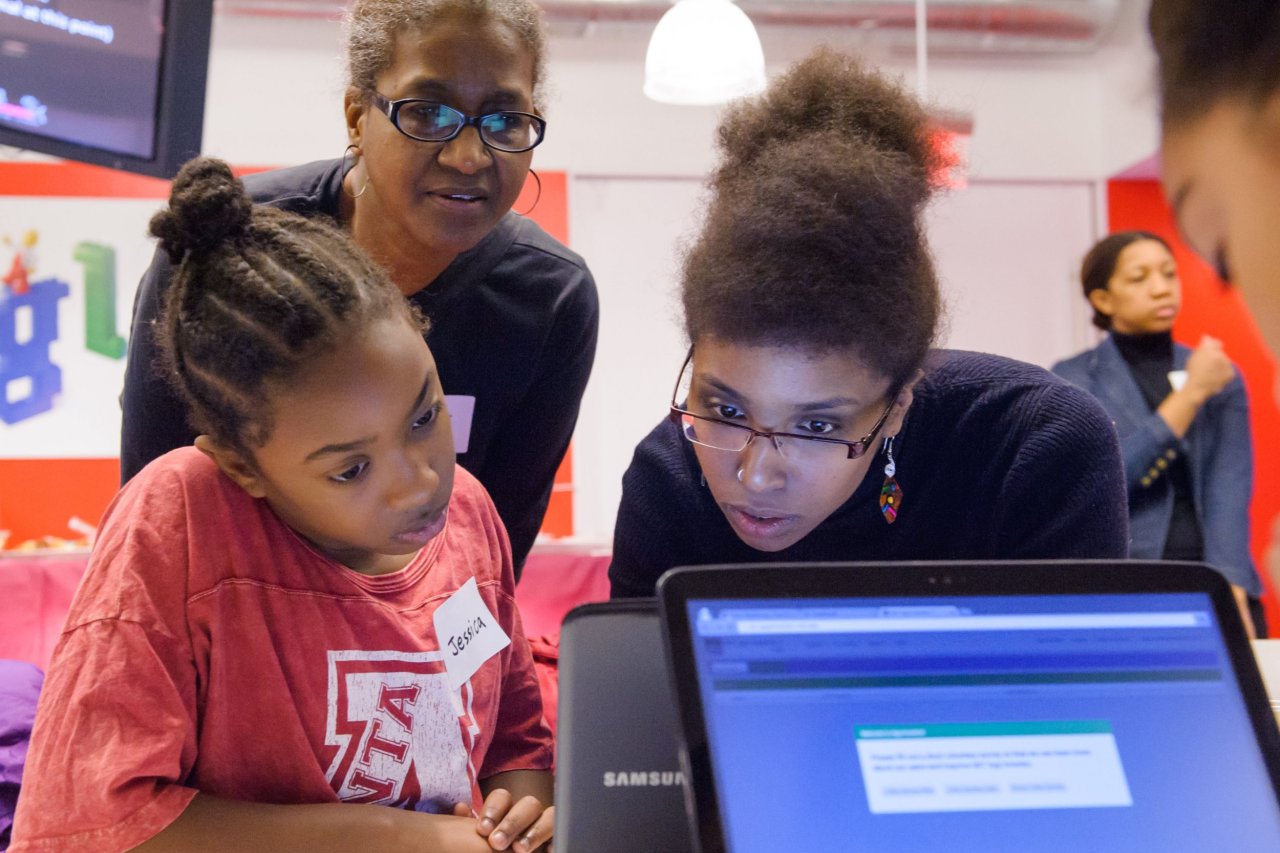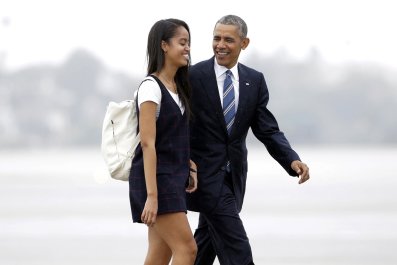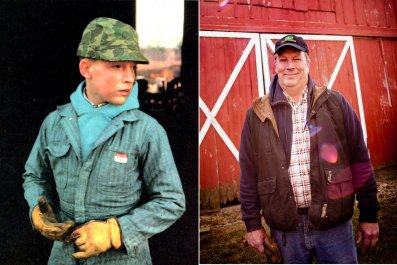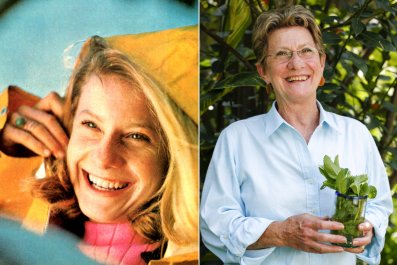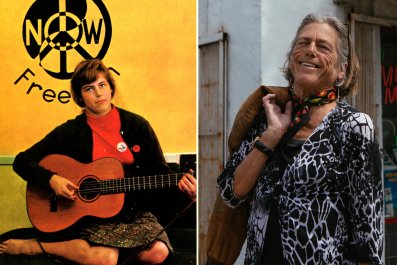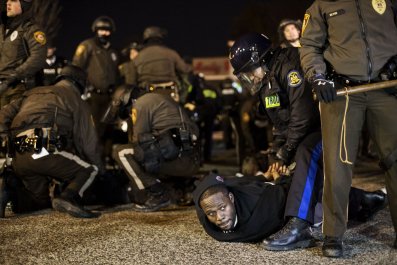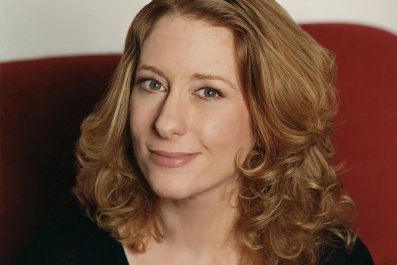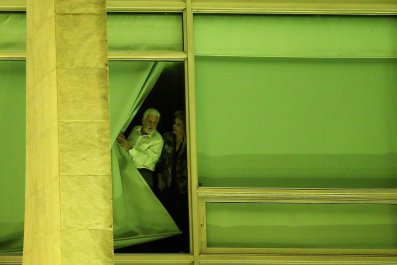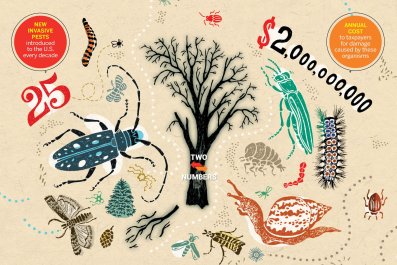"Today I made a self-driving car," NyEla, 10, says to a room of cheering parents and beaming girls ranging from elementary to high school. "It was pretty easy." Just hours ago, NyEla had never programmed, and now she was showing off her creation, a game where a car, of its own accord, navigates a roughly rendered track. NyEla dove into computer programming today with the help of an organization called Black Girls Code (BGC).
When BGC's West Coast Events Coordinator Amber Morse shouts to the crowd of parents and kids: "What do we do?" the girls shout back: "We change the face of technology!"
Black Americans make up just 7 percent of the country's technology engineers. Just 3 percent are black women. These race and gender gaps can't be explained by lack of access; the days when you had to be wealthy to use a computer as a kid have vanished. According to Barbara J. Ericson, a research scientist at Georgia Institute of Technology, the biggest problem now is not getting the opportunity to take computer science classes before college. Of all those who took the Advanced Placement test in computer science in 2015, 78 percent were male and only 4 percent were black. "The students with prior experience in those fields are the ones who are going to succeed in college," Ericson says.
The mission of BGC, which started in 2011, is to close the gap by getting girls tinkering with and thinking about programming while they're young, making them feel like they can compete in computer science classes in college and beyond. It's a goal shared by BGC's Silicon Valley sponsors like Salesforce and Google, which are struggling with diversity, and by similar nonprofits around the country, like Girls Who Code and Level the Playing Field.
BGC introduces young women of color to computer programming by hosting weekend coding sessions and pairing them with mentors. The girls learn to code with Scratch, a computer language developed at MIT that lets users manipulate visual tools to create algorithms, the logic systems behind programs. It's simple enough that children can learn it, but powerful enough to be used in introductory computer science classes at some universities. The girls drag and drop colored puzzle pieces to create simple instructions like "if the ball hits a wall, stop."
Most of the BCG volunteers work in tech and are acutely aware of the industry's massive diversity problem. "Tech is mostly white and Asian," says Robert Hui, a programmer with Netflix who volunteered his day to teach the girls to code. "That's been the demographic since college." He says his intro-level undergraduate computer science classes was about 25 percent female, but that number dwindled as he moved into more advanced classes. But Hui also thinks change is coming. After one grueling day of working through computer bugs, a girl ran up to one volunteer and said, "I'm going to work at Google when I grow up and I'm going to ride a bike at lunch," proving she's already got the soul of a techie.



